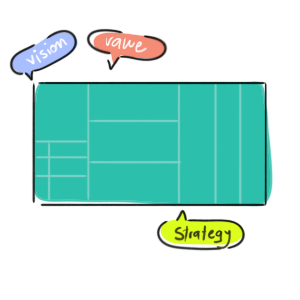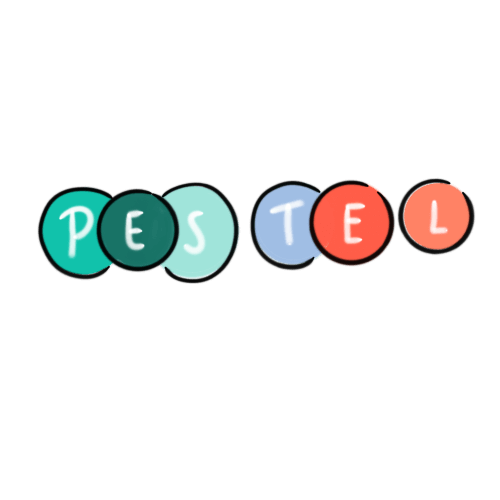
Product Strategy Template
The product strategy canvas is a tool that helps product teams develop a product strategy based on thinking not just about product features, but about how to bring the product to market, how to create the right promotions and pricing structure for your market, how to onboard new users, etc – from a strategic and long-term perspective.
Here are some of the type of things you need to think about whenever you are defining your product strategy:
- Product vision and your place in the market.
- Value proposition and Product/Brand Promise.
- Pricing model.
- Product Offer.
- Services and additional advantages.
- Relationships & partnerships.
- Process and Behaviours.
Defining the product strategy means thinking about the long-term goals, the problem you are trying to solve, the specific and unique ways you are solving it, and how your product will make a user choose you over another solution.
This tool was created by Rocio Fernandez in 2021.
STEP 1
Product Vision: Every product is the result of a team spotting an opportunity to solve a problem and reduce people’s pain, but the solution is part of a larger vision. Therefore, all product visions must be aligned with the overall business vision.
The product vision is an aspirational future state caused by the value of your product.
Here is a template: In [time frame] [company/product] will be [vision statement]. In order to reach our vision we need to [measurable objective] by [time frame]. After measuring we know that our current state is [measurements of current state]
STEP 2: Product Goals
In the first column, add your product goals. Then, in the middle column add the metrics or methods you will use to measure its success. Finally, add the deadline.
STEP 3/4: Target group | Empathy
👉Target group: Describe who they are, how are they different from your anti-buyer (anti-user) and the job-to-be-done.
👉Pains: Think about the negative experiences, feelings, and risks that the customer experiences while they are trying to get the job done.
👉Gains: What benefits would the customer expect? What would they need? What would delight customers? What things may increase the likelihood of adopting a value proposition?
STEP 5: Competitors and Revenue Streams
Describe your competitors and your revenue streams (recurring revenue, transaction-based revenue, project revenue, or service revenue)
STEP 6: Strategy
👉Product offer:
- Core Product: The essential motivational benefit the customer/user/client is looking for. It’s what the customer wants to get most.
- Functional requirements & Behavioral requirements(Emotional benefits).
- Basic Product: Physical and intangible properties that help satisfy the desire for the motivational benefit. You can also add a section for ‘Expected Product’.
- Augmented Product: Extra attributes that helps make the product/solution more attractive. Additionally, you can add an additional level ‘Potential product’
You should consider the emotional triggers, fears, and behaviors that will block users and potential users, as well as the strategies you can use to persuade them.
👉Velocity and production.
How would you improve velocity? (Operating efficiency, Inventory Turnover, Just-in-time development, New product time to market, Team processes and culture, Functional experts, …)
👉Methods of sale and distribution (+Channels)
(Market share, Branding, Pricing,..)
👉Return/Profit. (Capital acquisition, enhanced distribution of profits, Policies, Margins, Upselling,..)



